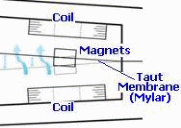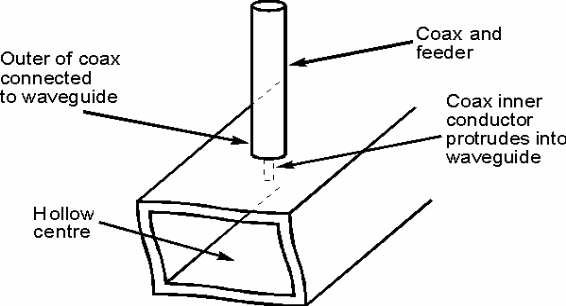Introduction
Wireless networking constitutes one of the greatest innovations of the 21st Century concerning personal computing. The recognition of the capabilities associated with Wi-Fi has remarkably increased the demand for technology (Earle, 2005). Nguyen, Yoshi, and Taun (2013) affirm that many users a wide range of accessibility with minimal interference. However, the US market does not have available devices to allow customers to access Wi-Fi over a wide range due to restrictions by the Federal Communication Commission [FCC] (Ted, 2012). This aspect underscores the existence of challenges in improving the implementation of Wi-Fi technology. This paper examines the challenges that might be encountered in the course of implementing Wi-Fi technology in the rural US using wind belt-cantenna technology.
Project challenges
Technical challenges
The effectiveness of the wind belt-cantenna technology in boosting the Wi-Fi signal might be affected by the ability of the wind belt to generate sufficient electricity. This aspect is influenced by wind speed, flow conditions, and direction. The wind belt-cantenna technology is based on the aerodynamic phenomenon. Therefore, the speed of the wind is fundamental in ensuring that the electricity generated is reliably available. In a bid to be effective, the speed of the wind must be sufficient to ensure that the belt vibrates at a high frequency to generate the needed high voltage. Fluctuations in the speed of the wind might affect the ability of the wind belt technology to generate electricity. Moreover, the wind must be reliable to create reliable electricity.
Economic challenges
Implementing Wi-Fi technology in rural areas using wind belt-cantenna is capital-intensive. Thus, the US government will be required to understand the impact of economic challenges.
Investment risk
The project’s ability to support the provision of the Wi-Fi technology to the rural areas using the wind belt-cantenna technology will depend on the government’s ability to establish the necessary infrastructure to enhance the distribution of the Wi-Fi signal to the target rural areas (Anandhaprabakaran, Shanmugam, Sridhar & Ajaykumar, 2015). For example, the US government might be required to establish boosters in specific rural locations. Establishing such infrastructure on a large scale might require a substantial budgetary allocation by the federal and state governments due to its capital-intensive nature. However, implementing the project might be hindered by the scarcity of funds. Prok (2008) emphasizes that project financing “can be a favorable option for capital-intensive projects” (p. 78). However, if the government does not raise the required finances, rolling out the project in the rural areas will be a major problem.
How to mitigate the investment risk
To deal with economic challenges, the US government must consider seeking funds from alternative sources. The government, through the Department of Energy, should partner with individual investors, private, and public companies operating in the target rural areas. The partnerships should be based on the concept of cost-sharing cooperative agreements. The cooperative agreement will attract local investors in the IT industry. The effective implementation of the wind belt technology will mean that a large number of consumers will access efficient Internet services. Thus, the likelihood of IT companies increasing their return on investment through the provision of Internet services. Moreover, this approach will make the local companies critical stakeholders in the wind belt-cantenna technology project, hence improving the project’s sustainability.
Socioeconomic challenges
Despite the efforts in providing the rural population with efficient Wi-Fi services through the wind belt-cantenna technology, it is imperative for the project owners, viz. the state and federal governments to be conscious of the potential socio-economic challenges.
Technology Training
The adoption of the wind belt-cantenna technology in improving the strength of the Wi-Fi signal amongst the local population will depend on their knowledge on how to use the computer and the Internet technology (Sasirekha, Divya & Meera, 2015). Additionally, the lack of knowledge on how to develop the antenna technology using the locally available materials might affect the quest to attain the extensive penetration of the Wi-Fi technology in rural areas. By using the locally available materials, the public will minimize the cost of implementing the technology in boosting the efficiency of their Internet services. However, the lack of adequate knowledge on developing the wind belt-cantenna technology might limit the penetration of Wi-Fi. The project owners will be required to ensure that a significant proportion of the rural population is trained on the aspects of the wind belt-cantenna technology.
Internet Usage
The implementation of the wind belt-cantenna technology will mean that a sizeable proportion of the rural population together with the institutions in the rural areas will access Internet services readily due to the enhanced Wi-Fi signal. However, the Internet might not contribute to the intended positive benefits amongst the target individuals and institutions such as hospitals and schools. This scenario might arise if the locals or users do not know how to apply the Internet to boost their efficiency in undertaking tasks. For example, the hospital staff and students might use the technology implemented in their institutions in undertaking job-unrelated tasks. According to Alwahaishi and Snasel (2013), the continued usage of the Internet is subject to the extent to which the users perceive that the technology is beneficial in enhancing the execution of the desired tasks, roles, and responsibilities. This behavior is well explained by the perceived usefulness and ease of use aspects of the Technology Acceptance Model. The model states,
Perceived usefulness is the belief that using a specific application system will raise performance while perceiving ease of use is concerned with the fact that applying a specific application technology requires minimal efforts…These aspects are subject to the extent to which the target users understand how to use the specific application system (Nguyen et al., 2013, p. 233).
Security
The application of wind belt-cantenna technology in enhancing the Wi-Fi network might be affected by the existence of security challenges. Henrie (2013) collaborates that citizens have progressively become concerned with the proliferation of cybercrime. Innovations in ICT have made it possible for hackers to intercept data and information being transmitted through online platforms. Cybersecurity threats limit the citizens’ adoption of Internet technology due to the likelihood of compromise on their privacy and confidential information. Despite the existence of such threats, the target users must implement effective security applications to curb the threat. This aspect will enable target users to generate value from the Wi-Fi network. This aspect will improve the level of trust in the Wi-Fi network.
Technical Information
The theory behind the wind belt technology
The concept of wind belt-cantenna technology is based on the concept of aeroelastic flutter. Balaguru, Raj, and Vignesh (2015) argue that aerostatic flutter “occurs when an aerodynamic force such as blowing wind or water exerts a load on an object causing that object to vibrate at its natural vibration mode” (p. 252). The vibration leads to the generation of energy. By employing the aeroelastic flutter, the wind belt converts the wind energy into electrical energy, which is enhanced by a set of electromagnetic coils and several magnets. The aerostatic flutter arising from the blowing wind causes the magnets to oscillate, hence inducing the electromagnetic coils to generate electric current. Therefore, wind belt technology is based on the concept of generating energy from renewable sources. Figure 1 below illustrates the main components of the wind belt technology.

Parameters to optimize for an increase in electric output
To optimize electric output, the project must take into account the various parameters outlined under Faraday’s law as illustrated by the formula below.
Motors and discarded transformers are effective in increasing the number of wire turns. Alternatively, winding copper wires can be used in making the coils. On the other hand, the magnetic flux can be optimized using stronger magnets like the neodymium magnet. Using such magnets will increase the induced voltage. The third parameter entails maximizing the time rate of change on the magnetic flux. This parameter is determined by the wind velocity, which is influenced by the prevailing wind conditions. Consequently, the project owners must ensure that the wind belts are located in areas characterized by suitable wind conditions.Where N =number of turns in the wind belts magnetic coils, Ø=the magnetic flux within the loop, Σ = the induced electromotive force and V= induced voltage.
The theory behind the cantenna
The purpose of the wind belt-cantenna technology is to strengthen the Wi-Fi signal by focusing on the radio waves. Subsequently, the technology enhances the reception of the signal by wireless phones, radios, and television. The technology can enhance the wire to receive the signal by minimizing interference and transmitting the radio frequency in the cans’ metallic walls. Thus, the signal reception is enhanced by the cans’ surface area, which improves the cantenna’s ability to receive a signal in diverse environments and locations. Additionally, a protruding coaxial cable transmits the signal received from the wave-guide. Figure 2 below illustrates the components of the antenna.

Cantenna radius
Based on the antenna theory, the radius of the antenna should be maintained between 3.65 centimeters and 4.67 centimeters. This radius will improve the efficiency with which the waveguide is received (Lobo et al., 2010).
Cantenna length
The antenna length is critical in determining the effectiveness of the wind belt-cantenna in receiving the Wi-Fi signal.
The antenna length should be a function of the wavelength of the Wi-Fi signal in open-air [Lo], the wavelength of the low cut frequency [Lc], which is a function of the diameter, and the standing wavelength inside the tube, which is a function of both Lo and Lc (Lobo et al., 2010, p.15).
Range of the cantenna
The range within which the antenna receives the signal is influenced by diverse factors such as temperature, power source, weather conditions, phase variations, and reflectivity of the ground. The most appropriate range of the antenna is estimated to be 250 meters in the outdoor.
References
Alwahaishi, S., & Snasel, V. (2013). Consumers’ Acceptance and Use of Information and Communications Technology: a UTAUT and Flow Based Theoretical Model. Journal of Technology Management and Innovation, 8(2), 61-73.
Anandhaprabakaran, B., Shanmugam, S., Sridhar, J., & Ajaykumar, S. (2015).
Enhancing the coverage area of Wi-Fi access points using cantenna. International Journal of Advanced Research Trends in Engineering and Technology, 2(4), 1-5.
Balaguru, P., Raj, V., & Vignesh, R. (2015). Low cost energy production using wind-belt technology, International Journal of Engineering and Innovative Technology, 2(9), 252-255.
Earle, A. (2005). Wireless security handbook. New York, NY: CRC Press.
Henrie, M. (2013). Cyber security risk management in the SCADA critical infrastructure environment. Engineering Management Journal, 25(2), 38-45.
Lobo, A., Mukwedeya, E., Kgati, T., Guobadia, K., Dega, J., & Gomashi, R. (2010).
Implementation of Wi-Fi network in rural areas using windbelt-cantenna technology. Web.
Nguyen, T., Yoshi, T., & Tuan, N. (2013). Technology acceptance model and the paths to online customer loyalty in emerging markets. Trziste, 25(2), 231-248.
Prok, J. (2008). Interstate wind; using new technology to enhance transportation fuel investment. Web.
Sasirekha, P., Divya, P., & Meera, K. (2015). Planning, designing and building large-scale Wi-Fi network at campus. International Journal of Advanced Research in Electronics and Communication Engineering, 4(3), 585-592.
Ted, G. (2012). Mobile devices, Apps, Wi-Fi networks need more security FCC. Web.
